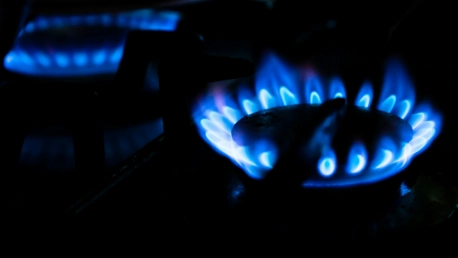As the U.S. enters a new quarter, the natural gas futures market is experiencing a downward trend due to an overabundant supply and moderate demand. This enduring dip in prices is a clear indication to traders and investors of the market’s current recessionary phase.Despite entering a seasonally colder period, which typically drives up demand for heating fuel, the market has remained bearish. Experts suggest that the high production levels, coupled with a tepid increase in consumption, have contributed to the excess supply. Even the export of liquefied natural gas (LNG), which often absorbs surplus domestic gas, has not been sufficient to elevate prices.Investors are now closely monitoring weather forecasts and storage levels in an attempt to gauge any potential shifts in market dynamics. Nonetheless, the fundamental structure of oversupply and the resultant price weakness appears likely to persist in the near term. This has led to cautious trading strategies as participants await signs of a more robust demand or a decrease in production that could help rebalance the market.In conclusion, the U.S. natural gas futures market is currently facing a relentless bearish pattern, fueled by a supply glut and lackluster demand, signaling a profound challenge for those involved in the sector.
The Bearish Pulse of the Market
Oversupply Dilemma
Despite the natural gas market anticipating less substantial withdrawals from storage, recent data showed that the actual draw of 36 billion cubic feet surpassed expectations. Nevertheless, the withdrawal pales in comparison to last year’s figure of 55 billion cubic feet during the same week. This modest drawdown does little to alleviate the persistently high supply levels that cast a long shadow over the market. With stored natural gas quantities remaining robust, the situation further entrenches the bearish outlook that dominates the sector’s sentiment. Market watchers note that this overabundance of supply continues to suppress prices and reinforce the challenges facing those hoping for a bullish shift. This prevalent bearish mood likely stems from both the cause and consequence of the ongoing oversupply, suggesting that without a significant change in market dynamics, the trend may persist.
Price Movements Indicate Market Sentiments
In-depth analysis of natural gas futures points to a deep-rooted pessimism among investors. As a fiscal quarter wrapped up, these futures took a substantial hit, plummeting 21.15%, accentuated by a 3.82% drop in just the last week. This sharp decline is far from a minor fluctuation; rather, it serves as a harbinger of underlying market doubts. Such pronounced downswings not only betray a collective wary stance regarding the short-term resurgence prospects for this commodity but also showcase the pervasive bearish outlook dominating current investor sentiment. The natural gas market’s recent performance is a clear indicator that trader confidence in a swift recovery is waning, leaving a trail of caution in its wake. The market’s reaction suggests that there may be further challenges ahead for natural gas, reinforcing the notion that the road to a bullish market may be fraught with obstacles.
Factors Influencing the Bearish Trends
Production Adjustments and Their Impact
In response to market turbulence and declining gas prices, leading producers such as EQT and Chesapeake Energy have reduced natural gas output in March to 100.2 billion cubic feet daily. This move is a strategic effort to mitigate the effects of volatile prices and address the supply glut. By scaling back production, the industry aims to stabilize the market and support prices. However, these measures are still not potent enough to fully combat the downward pressure on prices. The industry’s cautious approach to production adjustments seeks to carefully balance the market dynamics without further tipping the scales towards oversupply. The true impact of these actions on market prices and the long-term balance between supply and demand is yet to be seen, as the energy sector navigates through these challenging economic trends.
The Global Demand Conundrum
Compounding the domestic oversupply is the global weakening in the demand for LNG exports. This decline reverberates back into the U.S. market, compounding the already present supply issues. This international landscape is a critical piece of the puzzle, resonating with the need for market participants to keep a watchful eye on worldwide economic and political developments. Escalating volatility anchored in bearish tones seems almost inevitable, as analysts caution traders to be perpetually prepared for production shifts or unforeseen meteorological events that could disrupt the fragile market equilibrium.In these challenging times for the U.S. natural gas futures market, understanding the multiplex of factors at play is essential. This includes recognizing the pervasive oversupply, the calibrated production adjustments, and the international influences over demand – all factors that paint a meticulous picture of a market under the stronghold of a bearish outlook.








